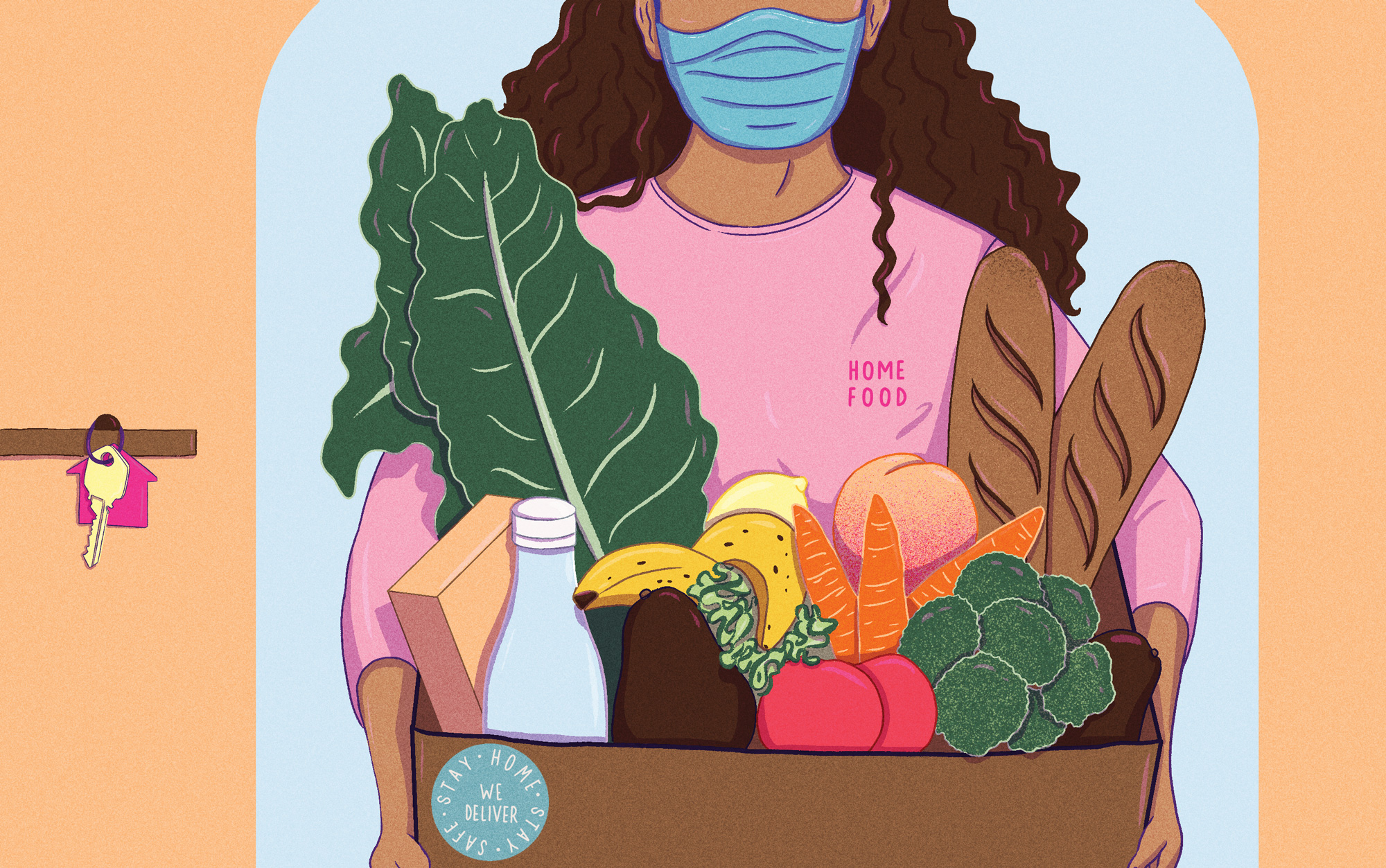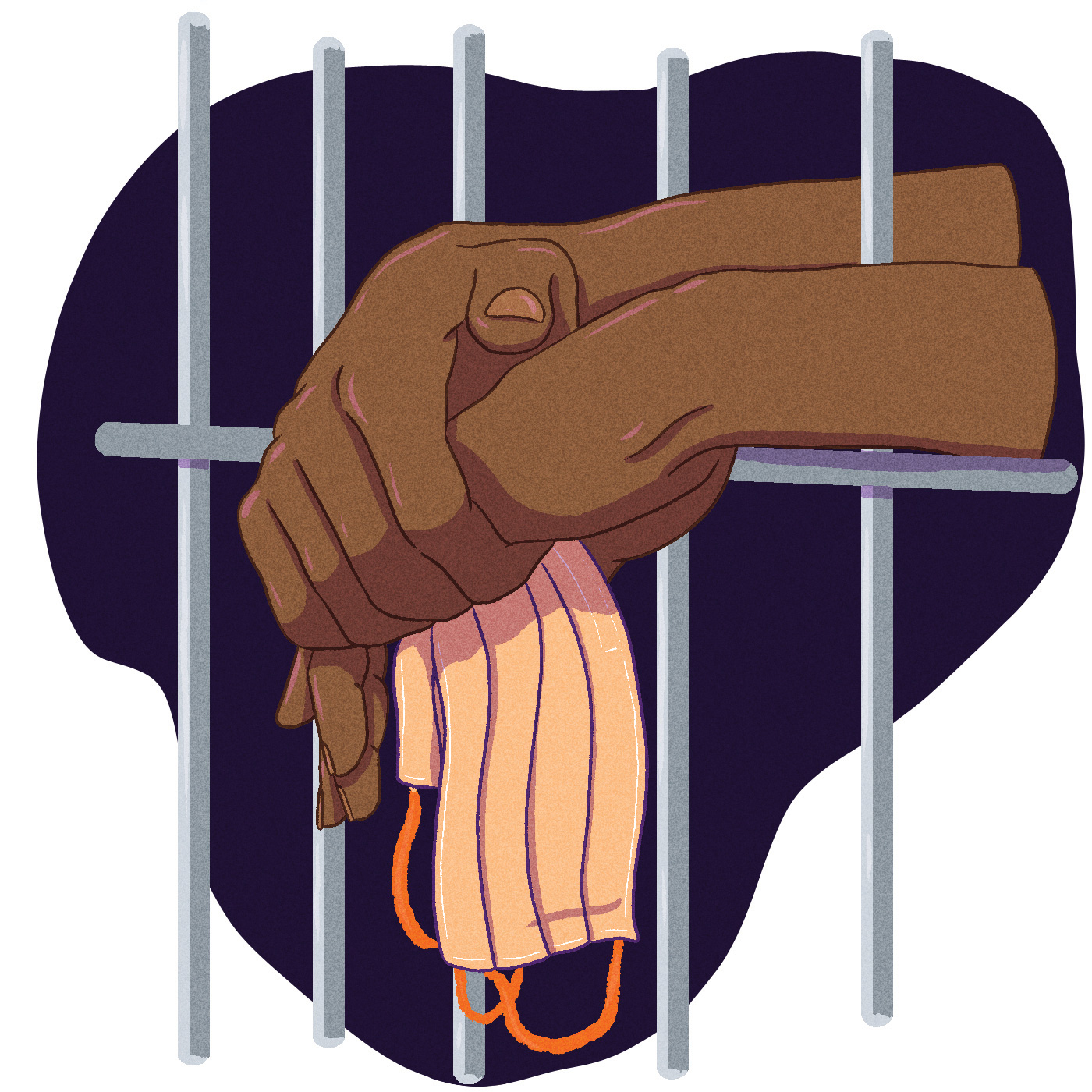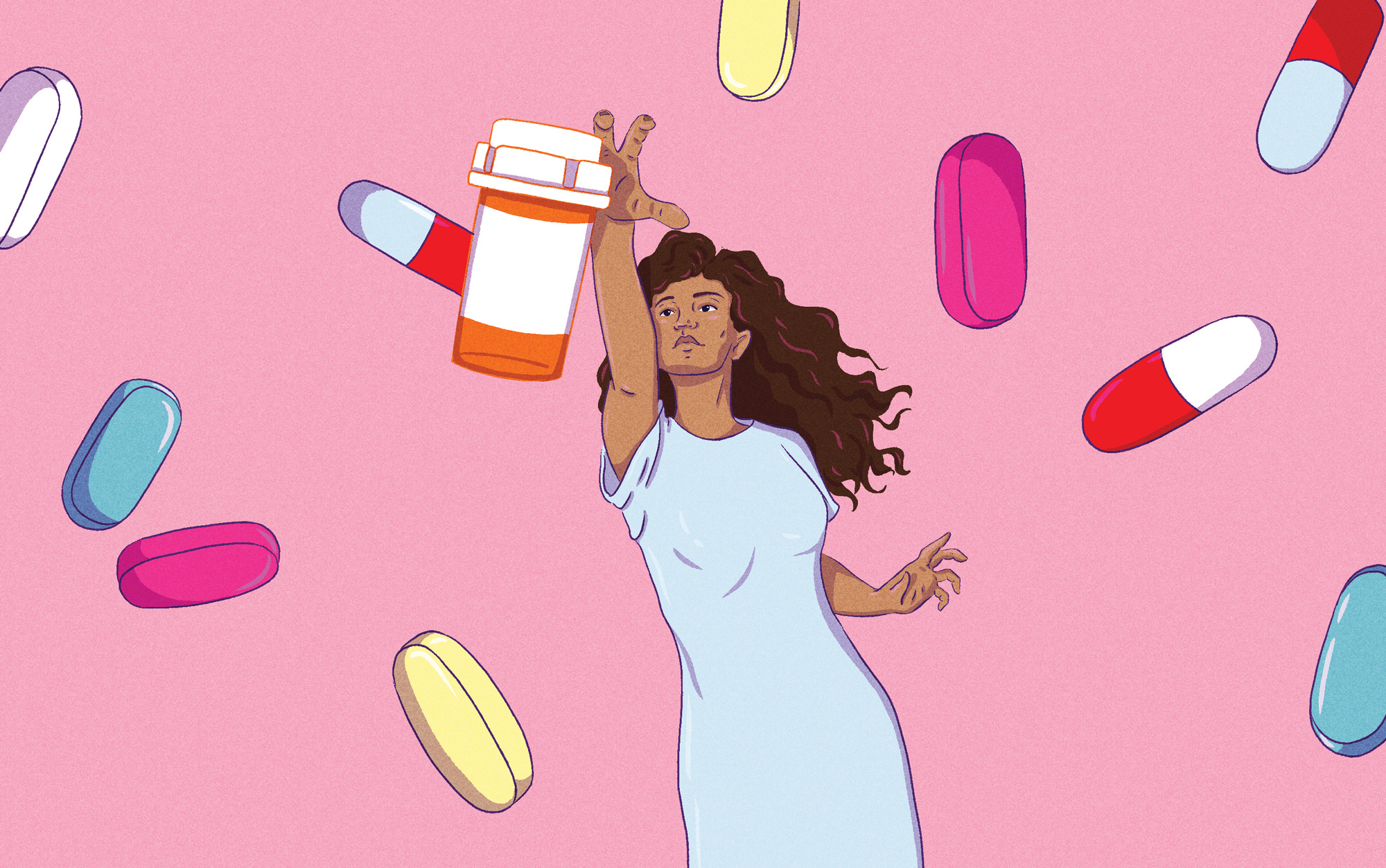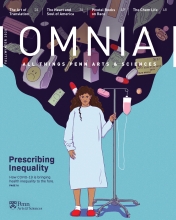Prescribing Inequality
How COVID-19 is bringing health inequality to the fore.
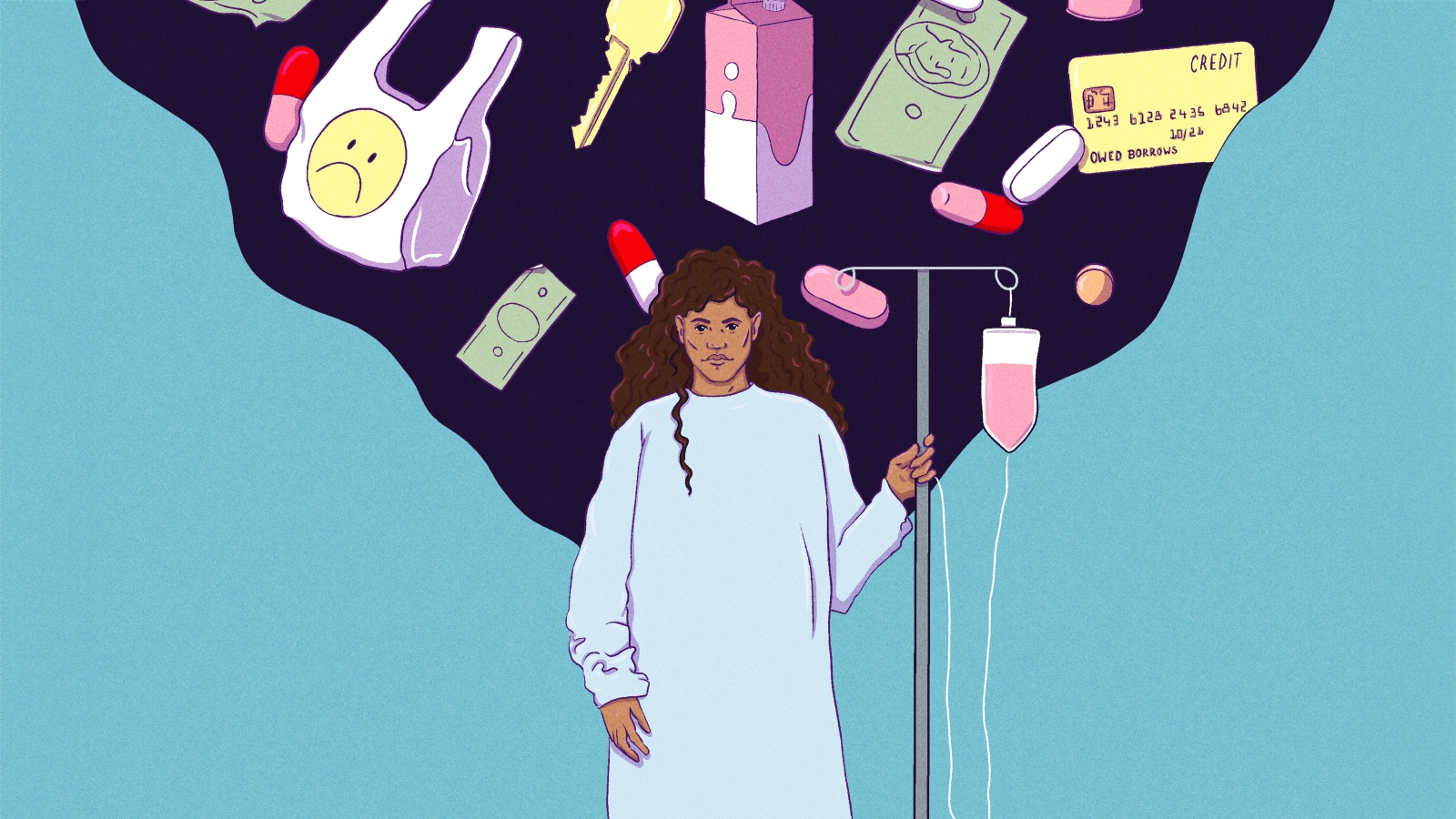
With over 10 million COVID-19 cases and more than 230,000 related deaths in the U.S. as of early November 2020, the pandemic has impacted every facet of daily life. It has also further exposed already dire health outcome inequalities, with rates of diagnoses and death disproportionately affecting racial minorities and low-income workers.
Social scientists at Penn Arts & Sciences who study health outcomes in the U.S. have ideas about what went wrong—and the problems do not start or end with the pandemic. We spoke with faculty who have unique perspectives on critical issues, including the effects of policy, race, and socioeconomic status on COVID-19 exposure and prognosis, mental and physical health in the carceral system, and the historical roots of racialized medicine.
Differential Risk and Recovery
Regina Baker, Assistant Professor of Sociology
When unexpected dangers arise, how likely are you to come out relatively unscathed? That is a question Regina Baker’s research on poverty risks and socioeconomic inequality can help to understand. The idea that people in different socioeconomic strata experience disparate outcomes is not a new one, she says, but COVID-19 has shined a light on the issue.
“Some of us have the ability to work remotely and order groceries. But who are the ones who are making that happen? If you’re poor and you lack income, you rely on low-wage jobs to provide for you and your family. That means you’re the one delivering these groceries—you’re the one putting yourself at risk,” says Baker, an assistant professor of sociology. Impoverished segments of the population also face challenges when it comes to precautionary measures, she adds. “If you’re poor and you live in public housing, highly concentrated with people, it’s going to make your ability to social distance a lot harder.”
Threats to wellbeing are compounded by daily stressors that may not seem obvious to those not facing them. “Many of us say we’re stressed because we have to worry about childcare or we have to be at home another day, but that’s very different from being stressed because you’re grieving the loss of somebody else in the neighborhood that has died of COVID,” Baker says. “These stressors can have long-ranging effects on people’s mental health, which is tied to physical health.”
Scenarios like the pandemic, which further stretch resources, also cast a long shadow on future economic outcomes. “It’s already been projected that if the economic trends continue, minorities—particularly Blacks and Latinos—are going to suffer the highest unemployment rates,” says Baker. “As a result of that, poverty is most likely going to rise among those groups, and that is devastating to think about, because huge gaps in wealth exist already.”
Many of us say we’re stressed because we have to worry about childcare or we have to be at home another day, but that’s very different from being stressed because you’re grieving the loss of somebody else in the neighborhood that has died of COVID.
These compounding effects are especially hard on future generations and result in what Baker refers to as cumulative disadvantage. “Not everyone can hire a private tutor, and some don’t even have access to reliable internet,” says Baker. “What do things like this do in terms of thinking about the achievement gaps that already exist? Or the disparities we see in testing scores and graduation rates? And what does this mean long term? This means the greater likelihood to experience an accumulation of disadvantage over time, as these factors can impact the ability to secure adequate employment and to build wealth later on in life, and this has implications for inequality.”
COVID-19 outcomes also have regional differences. “It’s not surprising to see an influx of cases in areas in the South that are choosing not to have the same social distancing restrictions in place, and not requiring masks.” Baker says. “The South is worse off in terms of inequality and poverty and the pandemic just exacerbates this, so it makes it even more important for the federal government to step up and do what’s needed in terms of helping minimize these disparate outcomes.”
It Starts with Policy
Julia Lynch, Professor of Political Science
Often, poor health outcomes are attributed to individual choice. But Julia Lynch, Professor of Political Science, says focusing on people’s health-related choices overlooks the root cause of disparities: inequality by way of government policy.
“What people eat, how much they exercise, whether they smoke or use illicit drugs—these can certainly affect health,” says Lynch, co-director of the Joseph H. Lauder Institute of Management and International Studies and author of Regimes of Inequality: The Political Economy of Health and Wealth. “But it’s important to remember that these behaviors are very often constrained by the circumstances that people live and work in, so they’re not really freely chosen.”
These circumstances are often precipitated by governmental policy, Lynch says. “Governments make choices that affect their population’s health, like providing safe drinking water, decent housing, or an adequate education,” she explains.
Lynch cites the regulation of the labor market and the economy—policies that impact labor rights, minimum wages, income taxation, and more—as one of the most important factors in health outcomes, especially during chaotic periods like the pandemic.
“During the COVID-19 outbreak, we’ve seen that having to go to work when you’re sick is not good for population health,” says Lynch. “But for some, they risk losing their job if they call in sick, due to a lack of worker protections.”
Another policy-informed area of concern is the welfare state, which acts as a safety net for low-income workers. “Welfare is not merely cash transfers to the impoverished,” Lynch says. “These policies have a direct impact on health because they free up financial resources for families to spend on things that keep them healthy. If I have government-subsidized housing or childcare, it’s going to be a lot easier for me to afford to eat fresh vegetables and meat and fish, rather than empty calories.”
Focusing on health behaviors very often makes health disparities worse, because the people who are most able to receive counsel ... are the very same people who already have more resources.
Access to health care—often the most hotly debated topic when it comes to improving health outcomes—only accounts for about a quarter of health outcome disparities, Lynch says, but is especially critical for the already-sick. “When affordable, high-quality, timely health care is not available to everyone, people are likely to experience worse health, not because health care prevents illness, necessarily, but because when things in your living or working environment cause you to become sick, you’re going to experience even worse outcomes if you don’t have access to treatment.”
In order to make advances in the fight for equal health outcomes, Lynch stresses that the messaging needs to shift. “Focusing on health behaviors very often makes health disparities worse, because the people who are most able to receive counsel about things like improving diet, or the dangers of smoking, are the very same people who already have more resources,” she says. “We need to reduce health inequalities by reducing social inequality more broadly, rather than by talking about it just in terms of ways to improve health among some population groups.”
Health in—and After—Prison
Jason Schnittker, Professor of Sociology
According to the COVID Prison Project, run by a group of interdisciplinary, public health scientists, as of October 30, 2020, there have been 164,096 COVID-19 cases among people incarcerated in prisons, 1,297 of whom have died. In addition, 33,417 cases have been reported among staff working in prisons, resulting in 73 deaths.
“The COVID situation is new and different, but infectious disease in prisons has long been a concern, whether it’s tuberculosis or HIV,” says Jason Schnittker, Professor of Sociology, who studies health outcomes in prisons, including the impact of infectious disease, depression, and PTSD, during and after incarceration. “Part of the issue is overcrowding, but even in less-crowded prisons you have lots of vulnerable people living in close quarters with limited health care resources and lots of comorbidities.”
Some prisons try to make sure inmates continue on their medications after they’re released. But these are not national programs, so there’s really no uniform policy.
The dangers of contagions in prisons are twofold—not only are the inmates at high risk while incarcerated, but if released, the risk to themselves and others is heavily impacted by whether they receive any transitional services.
“With inmates who are HIV positive, some prisons try to make sure inmates continue on their medications after they're released,” says Schnittker. “But these are not national programs, so there's really no uniform policy.”
According to the Pew Research Center, the Black imprisonment rate at the end of 2018 was nearly twice the rate among Hispanics and more than five times the rate among whites. This disproportionate rate of incarceration translates to a disproportionate exposure to risks, whether the culprit is an infectious disease like COVID-19, or myriad mental health conditions, which can become chronic and affect inmates for the rest of their lives.
“Many inmates who suffer with mental health conditions find it very difficult to reintegrate into society,” says Schnittker. “Carrying a record of incarceration can make their mental health trajectories even worse.” And once released from prison, ex-inmates are faced with a health care system he says still has a long way to go in regards to equality.
“There have been a lot of adjustments in recent years to eliminate treatment disparities, and to, for instance, educate physicians about implicit biases,” he says. “But the fact remains that Black patients receive lower-quality care than white patients for some types of treatments, and that a high-income person is going to have a different experience than a low-income person.”
Biased Science
Dorothy Roberts, George A. Weiss University Professor of Law and Sociology, Raymond Pace and Sadie Tanner Mossell Alexander Professor of Civil Rights, and Professor of Africana Studies
What does race mean, anyway? It’s a question that has been central in the career of Dorothy Roberts, George A. Weiss University Professor of Law and Sociology, Raymond Pace and Sadie Tanner Mossell Alexander Professor of Civil Rights, and Professor of Africana Studies.
“The biological concept of race was invented as a way to support, justify, and manage racism as a way of governing society,” says Roberts, who is also the director of the Penn Program on Race, Science, and Society and author of numerous books, including Fatal Invention: How Science, Politics, and Big Business Re-create Race in the Twenty-first Century and Killing the Black Body: Race, Reproduction, and the Meaning of Liberty [see p. 44]. “If we go back to the 1600s, we see the convergence of scientific concepts of race and the desire of Europeans to dominate other people.”
This outmoded framework continues to impact a host of health outcomes, including those related to COVID-19, Roberts says. “A recent article showed that Black patients in New Orleans suffering from the virus were more likely than white patients to be sent to die at home or in hospice care without adequate treatment at the hospital,” she says. Instead of addressing the structural racism that causes health disparities, many scientists and policy makers point to false concepts of innate racial differences, Roberts adds. “The idea that people of different races experience common diseases differently continues to profoundly and fundamentally shape medicine today. Doctors are still taught to notice right away the race of their patients.”
The historical impact of biased medicine can be linked to modern diagnostic instruments that use race as a key variable, Roberts says. She cites glomerular filtration rate, which measures kidney function: “The result of the blood test that determines how well the kidneys are filtering blood is reported differently depending on the patient’s race. If the patient is Black, the number is automatically adjusted upward. This translates to the Black patient being less likely to be referred to a specialist and less likely to be put on a kidney transplant waiting list.”
Lung-function assessments are similarly biased, Roberts says. “We can trace this directly back to Samuel Cartwright (a physician trained at Penn’s medical school who was charged by the Medical Association of Louisiana to investigate “the diseases and physical peculiarities of the Negro race”) who held the view that Black people innately had weaker lungs, and therefore had to be forced to work by white people in order to be healthy. And today there are still some instruments that measure lung capacity that have an adjustment for race,” says Roberts.
The idea that people of different races experience common diseases differently continues to profoundly and fundamentally shape medicine today.
Roberts also cites a report on the National Football League’s concussion settlement practices. “The Black players have to show greater damage to their brains than white players to qualify for dementia claims because the algorithm has a built-in assumption that the Black players entered football with lower-functioning brains,” she says.
Race-based medicine has also spilled over into the pharmaceutical industry, Roberts says. “Not only are many pharmaceuticals prescribed according to race, but the Food and Drug Administration has even approved a race-specific drug for heart failure that was labeled for African-American patients based on a theory that Black patients’ physiology is different from other patients.”
Roberts also says that one of the primary ways the U.S. continues to produce unequal health outcomes is by turning health problems into crimes. “One of the most striking examples of this is the government’s response to drug use during pregnancy at the end of the 1980s during the so-called crack epidemic,” she says. “Instead of treating it as an important public health problem that required public health measures, it was treated as a crime, and hundreds of Black women were arrested and incarcerated.”
Universal health care would go a long way toward improving COVID-19 and other health outcomes in the U.S., she says, but the nation needs to simultaneously deal with a host of other social justice issues—and one in particular. “We need to start by abolishing the idea that human beings are naturally divided into races.”
Unequal Footing
Courtney Boen, Assistant Professor of Sociology
Courtney Boen, Assistant Professor of Sociology, takes a comprehensive approach to researching health outcomes, breaking down a problem into its component parts. Take her research on inequality’s effect on aging. “Research has shown that institutions in the U.S., including the health care system, differentially treat people based on factors like race, ethnicity, immigration status, and language. All of this serves to generate inequalities in the exposure to health risks, but also the severity of health conditions, and eventually, the differential risks of death and survival, as social inequalities lead to an acceleration in physiological aging among socially marginalized groups.”
There’s nothing natural or inevitable about these racial disparities. These are entirely socially determined.
Her research on aging provides a unique lens for examining COVID-19 outcomes. “Differential risk of exposure is stratified along key dimensions of inequality, including factors like who's an essential worker, who's able to stay home, who has caregiving responsibilities, and who lives in a multi-generational household,” says Boen, whose research has found that there is a higher prevalence of chronic disease and pre-existing health conditions among younger Black individuals compared to younger white individuals because of inequalities in social and economic conditions. And once someone has been infected with the virus, she says these same factors shape how severe the patient’s case is. “There's nothing natural or inevitable about these racial disparities. These are entirely socially determined.”
Centralized data and reporting are critical for developing effective, equitable interventions that can mitigate differential risks during a pandemic. “We've received a lot of mixed messages on behalf of political leaders on the federal side, and you find governors and public health officials having to scramble to counteract them,” says Boen. “This is going to fracture the response at the state level and that is going to produce vastly different pandemic outcomes in ways that mirror many of the same infectious disease and chronic disease patterns that we've been documenting for decades.”
Looking toward the future when an eventual vaccine is developed, Boen is certain that the rollout will be complicated by social and economic factors. “There's been this widespread conversation happening about holding out for a vaccine, as if a vaccine is going to be some silver bullet that comes in and solves all these problems, but that’s just not the case,” she says. “There are decades of research showing the problems and challenges of widespread vaccine programs, both in terms of distribution and public buy-in.”
Boen says that in order to improve health outcomes, the U.S. needs to reexamine its strategy. “Many countries across the globe have managed to contain COVID using old-school public health practices, but we've made political decisions other countries have not,” she says. “We have many of the answers in our back pocket. It's a question of whether or not politically we can make them happen.”
Hear directly from featured faculty on In These Times, a podcast that uses COVID-19 as a platform to explore the issues of 2020: www.sas.upenn.edu/in-these-times
